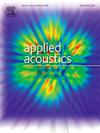The acoustics of 16th-century Jesuit churches in Andalusia: Latin cross plans following the model of Il Gesù
IF 3.4
2区 物理与天体物理
Q1 ACOUSTICS
引用次数: 0
Abstract
Following the Council of Trent, profound changes were observed in ecclesiastical architectural space as a result of the new spirit infused into the Catholic Church by the Counter-Reformation. The Jesuit mother church, Il Gesù, contributed to the consolidation of the model of the single nave church, eliminating the aisles and reducing the size of the transept. This architectural model was disseminated in step with the expansion of the Society. The churches of Santa Catalina (Cordoba), La Anunciación (Seville), and La Encarnación (Marchena, Seville) provide emblematic examples of the model adopted by the Society of Jesus in the second half of the 16th century in Andalusia. The typological, geometric, and material similarities displayed by these churches enable a common analysis of the sound field, to be carried out through in-situ acoustic measurements and simulations. The study of different source positions in similar models enables the determination of the optimal source and receiver configurations. It was found that the position on the main altar, coinciding with the position of the priest in the Tridentine rite, does not facilitate the perception of the sound field, except in the positions in the high tribunes. When the source is under the dome of the transept, the sound field evaluation is more favourable. Conversely, a comparative analysis of churches considered to be ’twins’, St Catalina and La Anunciación, has shown the impact that the interior cladding of these spaces has on the perception of their sound field.
16世纪安达卢西亚耶稣会教堂的声学效果:以Il Gesù为模型的拉丁十字架计划
在特伦特会议之后,由于反宗教改革运动注入天主教会的新精神,教会建筑空间发生了深刻的变化。耶稣会的母教堂,Il Gesù,促进了单一中殿教堂模式的巩固,消除了过道,缩小了耳堂的大小。这种建筑模式随着社会的扩张而传播。圣卡塔利娜教堂(科尔多瓦)、La Anunciación教堂(塞维利亚)和La Encarnación教堂(塞维利亚马尔切纳)是16世纪下半叶安达卢西亚耶稣会采用的典型范例。这些教堂所显示的类型、几何和材料的相似性使得通过现场声学测量和模拟对声场进行共同分析成为可能。通过对相似模型中不同源位置的研究,可以确定最佳的源和接收机配置。人们发现,主祭坛上的位置与特伦丁仪式中牧师的位置一致,除了在高护坛上的位置外,并不利于对声场的感知。当声源位于耳堂穹顶之下时,声场评价更为有利。相反,对被认为是“双胞胎”的圣卡塔利娜教堂和La Anunciación教堂的比较分析表明,这些空间的内部包层对其声场的感知产生了影响。
本文章由计算机程序翻译,如有差异,请以英文原文为准。
求助全文
约1分钟内获得全文
求助全文
来源期刊

Applied Acoustics
物理-声学
CiteScore
7.40
自引率
11.80%
发文量
618
审稿时长
7.5 months
期刊介绍:
Since its launch in 1968, Applied Acoustics has been publishing high quality research papers providing state-of-the-art coverage of research findings for engineers and scientists involved in applications of acoustics in the widest sense.
Applied Acoustics looks not only at recent developments in the understanding of acoustics but also at ways of exploiting that understanding. The Journal aims to encourage the exchange of practical experience through publication and in so doing creates a fund of technological information that can be used for solving related problems. The presentation of information in graphical or tabular form is especially encouraged. If a report of a mathematical development is a necessary part of a paper it is important to ensure that it is there only as an integral part of a practical solution to a problem and is supported by data. Applied Acoustics encourages the exchange of practical experience in the following ways: • Complete Papers • Short Technical Notes • Review Articles; and thereby provides a wealth of technological information that can be used to solve related problems.
Manuscripts that address all fields of applications of acoustics ranging from medicine and NDT to the environment and buildings are welcome.
 求助内容:
求助内容: 应助结果提醒方式:
应助结果提醒方式:


